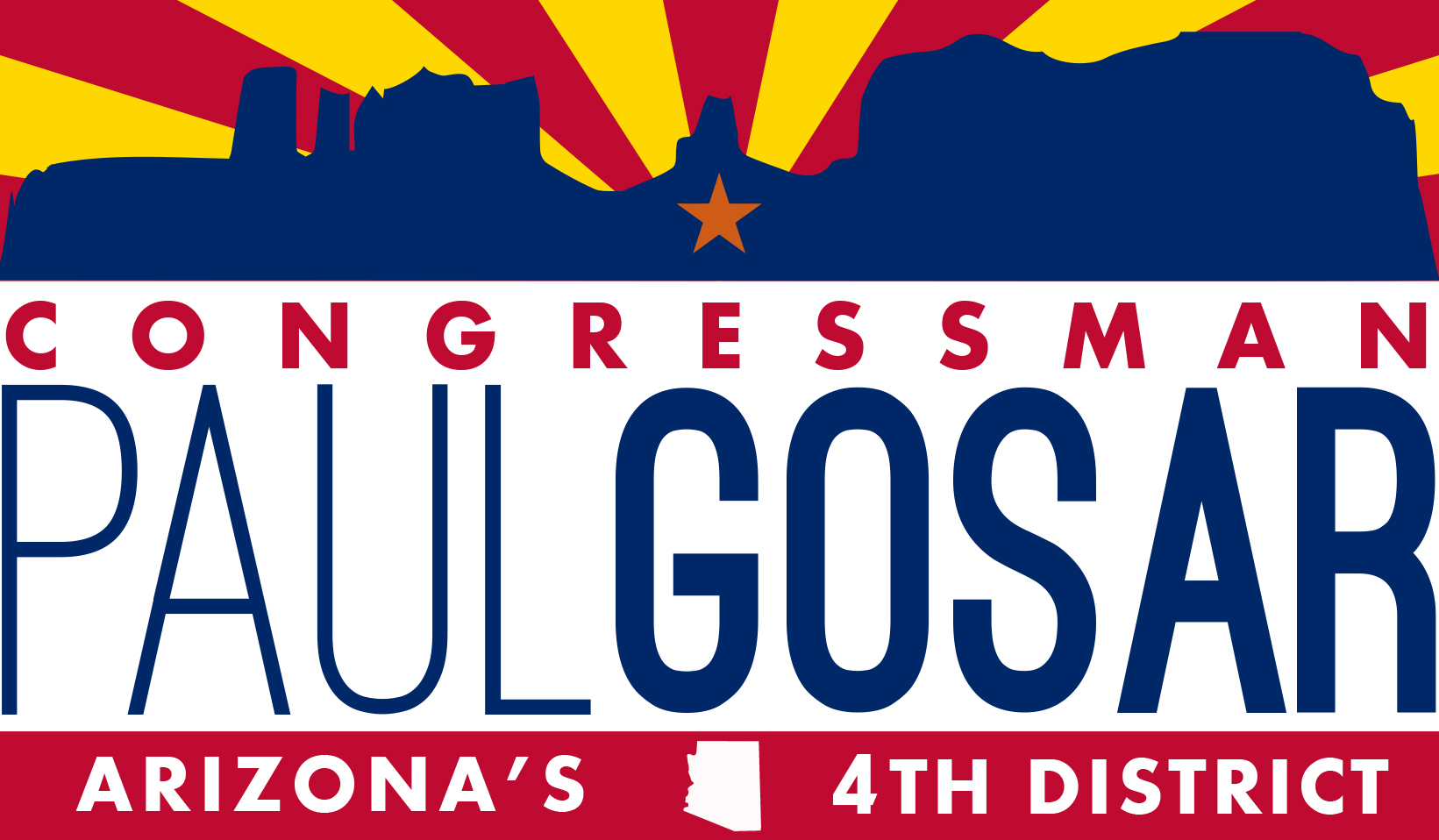|
Today, U.S. Congressman Paul A. Gosar, D.D.S. (AZ-04) released the following statement after the U.S. Fish and Wildlife Service announced that the Sonoran desert tortoise will be removed from the Endangered Species Act (ESA) candidate list:
“Today’s decision is good for Arizona’s economy, good for the future education needs of our children and good for the Sonoran desert tortoise. Unfortunately, we aren’t out of the woods yet, as this finding will likely be challenged by extremist environmental groups whose real intentions are to stifle development. For far too long, unnecessary and misguided species listings, not based on science, have resulted in endless new regulations that harm our economic prosperity. These bureaucratic decisions, often in response to frivolous lawsuits filed by extremist self-interest groups, have caused considerable damage to education, grazing, agriculture, energy and housing interests as well as exacerbated wildfire mitigation challenges.
“Local conservation efforts continue to yield positive results for threatened species, like the Sonoran desert tortoise, and incentivize local property owners, ranchers and developers to work with federal and state wildlife management agencies. I applaud and congratulate the State of Arizona for the role it played in ensuring today’s outcome. Congress must continue to make progress to ensure that local conservation efforts which invest significant resources to preserve species are rewarded. Furthermore, it is far past time for Congress put an end to the never-ending cycle of baseless lawsuits pushed by far-left environmental groups which allow attorneys to get rich and cost taxpayers millions of dollars each year.”
The Game and Fish Commission Chairman Kurt Davis stated “The FWS decision not to list the Sonoran desert tortoise is a prime example of the Department’s critical role in being the most trusted, respected and credible source for wildlife conservation and information. This model must be followed during the Services consideration to list any future species.”
“The data that today led to the US Fish and Wildlife Service determination to not list the Sonoran desert tortoise came from our Arizona Game and Fish Department. With more than 800 species in Arizona, the most of any non-coastal state, the Arizona Game and Fish Department has been the boots on the ground for decades to collect the best data while managing the states’ species. This is proof that people living in the state and are impacted the most have the best data and solutions.”
Background
In announcing the decision that the Sonoran Desert Tortoise does not warrant endangered species protection the U.S. Fish and Wildlife Service (Service) stated, “the status review employed today showed that there are presently 470,000 to 970,000 adult desert tortoises rangewide on approximately 38,000 square miles (24 million acres, 9.8 million hectares) of potential tortoise habitat (64% in the U.S. and 36% in Mexico). The tortoise has not experienced any significant reduction in its overall range and past population losses are presumed to be limited to urbanization in historical tortoise habitat.”
Rob Bishop, Chairman of the House Natural Resources Committee recently reported that in the last 40 years more than 1,500 species have been listed under the Endangered Species Act but only 2% have been recovered.
On July 7, 2015, Congressman Gosar successfully passed an amendment to block the U.S. Fish and Wildlife Service from listing Sonoran desert tortoise as an endangered or threatened species. This rider was subsequently attached to the Interior, Environment and Related Agencies Appropriations Act for Fiscal Year 2016. Of the potential 26.8 million acres that would have been designated for critical habitat due to such a listing, 15 million acres are in Arizona, 4.5 million acres of which are State Trust land. Approximately 9 million acres would be in Congressman Gosar’s district.
State Trust land revenues—currently enjoyed by 13 beneficiaries, of whom K-12 education is the largest proportional share of those monies—would have been severely impacted by designating this species as threatened or endangered. Unnecessary listings make acres of Trust land become less valuable for investment as they are burdened with a federal regulatory nexus resulting in less money flowing into education coffers.
The Sonoran desert tortoise is also of substantial concern to many different types of industry as its habitat falls within urban development corridors, as well as rural and agricultural landscapes. Listing the species as threatened or endangered would have negatively impacted commercial, housing and energy developers as well as the agriculture and grazing industry, specifically 273 different grazing allotments jeopardizing nearly six million acres used for livestock grazing.
Mining would have also suffered as the BLM listed 9,675 new mining claims from 1990 to 2002, 36% of which fall within Sonoran desert tortoise’s habitat. Any ground and vegetation-disturbing activities, including fire suppression activities and restorative treatments, would also have be negatively impacted by a listing decision for this species. Solar energy would also likely have been harmed as “large solar projects on desert floors” are considered a potential threat to the Sonoran desert tortoise.
Congressman Gosar’s amendment was endorsed by: Public Lands Council, National Cattlemen’s Beef Association, Americans for Limited Government, Arizona Cattleman’s Association, Arizona Farm Bureau, Arizona Mining Association, Arizona Cattle Growers’ Association, Arizona Cattle Feeders' Association, Arizona Rock Products Association, the Homebuilders Association of Central Arizona, Coconino County Farm Bureau and Cattle Growers Association, Yavapai Cattle Growers Association, Navajo/Apache Cattle Growers Association, Greenlee Cattle Growers Association, La Paz Stockmen’s Association, Mohave Livestock Association, Gila County Cattle Growers Association, Maricopa County Cattle Growers Association, Cochise /Graham Cattle Growers Association, Southern Arizona Cattlemen's Protective Association and the Yavapai County Board of Supervisors.
###

|

